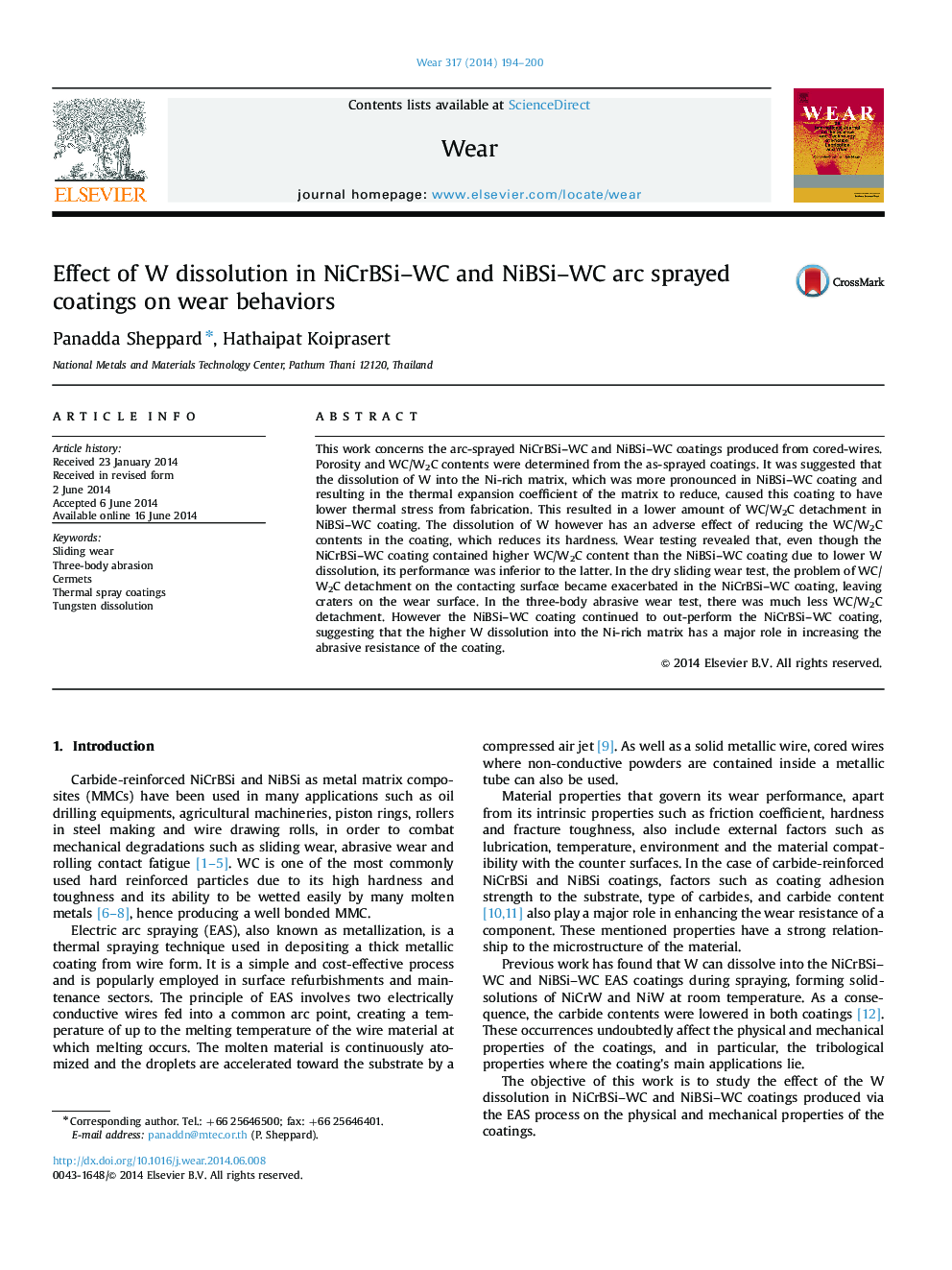| Article ID | Journal | Published Year | Pages | File Type |
|---|---|---|---|---|
| 617286 | Wear | 2014 | 7 Pages |
Abstract
This work concerns the arc-sprayed NiCrBSi-WC and NiBSi-WC coatings produced from cored-wires. Porosity and WC/W2C contents were determined from the as-sprayed coatings. It was suggested that the dissolution of W into the Ni-rich matrix, which was more pronounced in NiBSi-WC coating and resulting in the thermal expansion coefficient of the matrix to reduce, caused this coating to have lower thermal stress from fabrication. This resulted in a lower amount of WC/W2C detachment in NiBSi-WC coating. The dissolution of W however has an adverse effect of reducing the WC/W2C contents in the coating, which reduces its hardness. Wear testing revealed that, even though the NiCrBSi-WC coating contained higher WC/W2C content than the NiBSi-WC coating due to lower W dissolution, its performance was inferior to the latter. In the dry sliding wear test, the problem of WC/W2C detachment on the contacting surface became exacerbated in the NiCrBSi-WC coating, leaving craters on the wear surface. In the three-body abrasive wear test, there was much less WC/W2C detachment. However the NiBSi-WC coating continued to out-perform the NiCrBSi-WC coating, suggesting that the higher W dissolution into the Ni-rich matrix has a major role in increasing the abrasive resistance of the coating.
Related Topics
Physical Sciences and Engineering
Chemical Engineering
Colloid and Surface Chemistry
Authors
Panadda Sheppard, Hathaipat Koiprasert,
